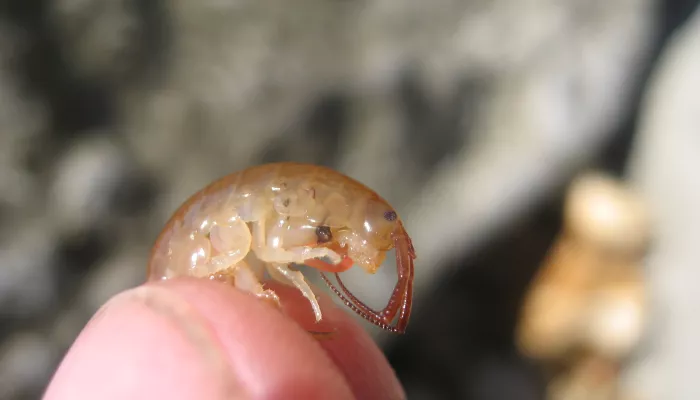About
Sand hoppers are a type of crustacean. They are pretty small and spend the daytime buried in the sand at depths of 10-30cm or hidden in strandline debris. They emerge at night to feed on decaying seaweed and other detritus. Adults spend the winter in a dormant state, buried in the damp sand at depths of up to 50 cm above the spring tide mark.They are an important food source for shore birds. Sand hoppers are sometimes referred to as sand fleas. This refers only to their jumping abilities - don't confuse them with the bitey sand fly, sand hoppers don't bite people.

